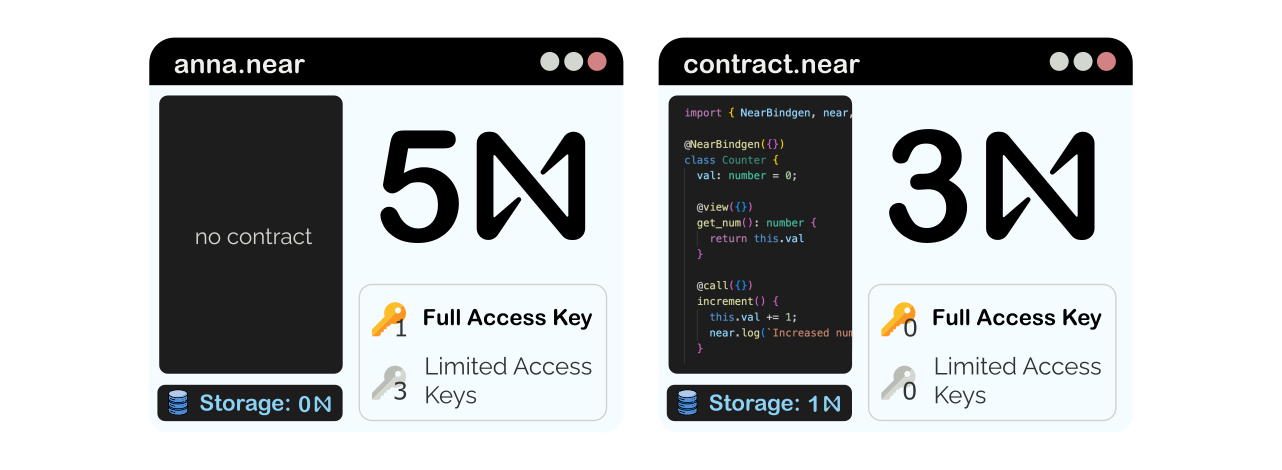NEAR Accounts
Users participate in the NEAR ecosystem through their NEAR accounts. These accounts are identified by a unique address, can optionally hold a smart contract, and are controlled through Access Keys.
By signing transactions with their account, users can:
- Send and receive digital assets (such as tokens or collectibles)
- Create and interact with on-chain applications known as smart contracts
- Control accounts in other chains (such as Ethereum or Bitcoin) ✨
- Help onboard new users by covering the costs of their transactions (gas fees)
You have multiple ways to create an account, you can sign-up using your email (note: email-based accounts currently have limited ability to transfer funds or sign transactions), get a mobile wallet through telegram, or create a web wallet.
Account Model Overview
Let's take a closer look at the different elements that compose the NEAR account model.

Account ID
NEAR implements two types of accounts IDs: named accounts such as alice.near, which are simple to remember and share, and the classic alphanumeric IDs (fb9243ce...) that other chains also implement.
Permissions Through Access Keys
NEAR accounts can have multiple keys, each with their own set of permissions. This allows to easily swap keys if one gets compromised, and to use keys as authorization tokens for third-parties.
Simple to Develop Smart Contracts
NEAR accounts can optionally hold a simple program, known as a smart contract. In NEAR, developers can create smart contracts using languages such as Javascript or Rust.
Comparison With Ethereum
If you're familiar with development on Ethereum, it's worth making a quick note about how accounts are different. The table below summarizes some key differences:
| Ethereum Wallet | NEAR Account | |
|---|---|---|
| Public Identifier | Public Key (0x123...) | Named IDs (alice.near) and implicit accounts (Public Key 0x123...) |
| Secret Key | Private Key (0x456...) | Multiple key-pairs with permissions: - FullAccess key- FunctionCall key |
| Characteristics | - Private key gives full access - Account doesn't have to be created via a transaction | - Permission-based keypair - Account ID must be created via blockchain transaction |

